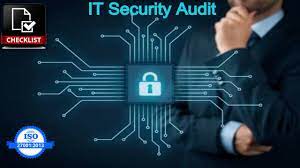
A Cyber Security Audit is a comprehensive assessment of an organization’s cyber security posture. It involves evaluating policies, procedures, controls, and technologies to identify vulnerabilities and ensure the protection of sensitive data and systems. Here’s a summary of key aspects:
- Risk Assessment and Management
- Threat Landscape Analysis: Identify and evaluate potential threats, including cyber-attacks, insider threats, and natural disasters.
- Risk Assessment: Assess the likelihood and impact of different security risks on the organization.
- Risk Management Strategy: Review the effectiveness of the organization’s risk management policies and procedures.
- Security Policies and Procedures
- Policy Review: Evaluate existing security policies, including access control, data protection, and incident response.
- Compliance Checks: Ensure that security policies comply with relevant laws, regulations, and industry standards (e.g., ISO/IEC 27001, NIST).
- Employee Training: Assess the effectiveness of training programs on cyber security awareness.
- Access Control and Identity Management
- User Access Review: Evaluate how user access to systems and data is controlled and monitored.
- Authentication Mechanisms: Assess the strength and effectiveness of authentication methods, including passwords, multi-factor authentication (MFA), and biometrics.
- Privilege Management: Review how administrative and privileged accounts are managed and secured.
- Network Security
- Firewall and Perimeter Security: Assess the configuration and effectiveness of firewalls, intrusion detection/prevention systems (IDS/IPS), and other perimeter security measures.
- Network Segmentation: Evaluate how the network is segmented to contain breaches and limit the spread of threats.
- Encryption Practices: Review the use of encryption for data in transit and at rest to ensure data integrity and confidentiality.
- Endpoint Security
- Antivirus and Anti-Malware Solutions: Assess the deployment and effectiveness of antivirus, anti-malware, and endpoint detection and response (EDR) tools.
- Patch Management: Review the processes for updating and patching software and operating systems to fix vulnerabilities.
- Mobile Device Management (MDM): Evaluate the security controls for mobile devices, including BYOD (Bring Your Own Device) policies.
- Data Protection and Privacy
- Data Classification: Ensure that data is classified based on its sensitivity and value.
- Data Encryption: Review the implementation of encryption for sensitive data, both at rest and in transit.
- Data Loss Prevention (DLP): Assess the effectiveness of DLP strategies and tools in preventing unauthorized access or exfiltration of data.
- Incident Response and Management
- Incident Response Plan: Evaluate the organization’s incident response plan, including detection, containment, eradication, and recovery procedures.
- Incident Detection: Assess the effectiveness of security monitoring tools and techniques in detecting potential security incidents.
- Post-Incident Review: Review the processes for learning from incidents and improving security posture.
- Disaster Recovery and Business Continuity
- Disaster Recovery Plan (DRP): Assess the adequacy of the DRP in recovering from cyber-attacks and other disruptions.
- Backup and Restoration: Review the processes for regular data backups and the ability to restore systems and data after an incident.
- Business Continuity Planning (BCP): Ensure that business continuity plans include contingencies for cyber security incidents.
- Third-Party and Vendor Risk Management
- Vendor Security Assessment: Evaluate the security posture of third-party vendors and partners.
- Contractual Obligations: Review contracts and SLAs to ensure that vendors meet required security standards.
- Supply Chain Security: Assess the security risks associated with the organization’s supply chain.
- Application Security
- Secure Development Practices: Review the practices followed in the software development lifecycle (SDLC) to ensure security is integrated from the start.
- Vulnerability Assessment: Conduct assessments to identify vulnerabilities in applications, including web applications and APIs.
- Penetration Testing: Perform controlled attacks to test the resilience of applications and systems against cyber threats.
- Monitoring and Logging
- Security Information and Event Management (SIEM): Evaluate the use of SIEM tools for centralized logging, monitoring, and analysis of security events.
- Log Management: Review how logs are collected, stored, and analyzed for detecting anomalies and potential threats.
- Anomaly Detection: Assess the effectiveness of tools and processes in identifying unusual activities that may indicate a security breach.
- Reporting and Recommendations
- Audit Findings Report: Provide a detailed report of the audit findings, highlighting vulnerabilities, non-compliance issues, and areas of improvement.
- Remediation Plan: Offer recommendations for addressing identified vulnerabilities and strengthening the organization’s cyber security posture.
- Follow-Up Audits: Suggest follow-up audits to verify that remediation actions have been implemented and are effective.
A Cyber Security Audit helps organizations identify and mitigate risks, enhance their security measures, and ensure compliance with regulatory requirements, ultimately protecting against cyber threats and ensuring the integrity, confidentiality, and availability of information.
Mumbai Office: 106 – Guru Nityanand C.H.S. D’Silva Wadi, Sayani Road Prabhadevi – Mumbai 400 024
Contact Us
Pune Office: Address: Office No: 404 – Heaven Arcade, Salunke Vihar Road, Pune 411040
Call & Whatsapp: +91 84549 36274
Email: Info@imagesys.in | www.imagesys.in